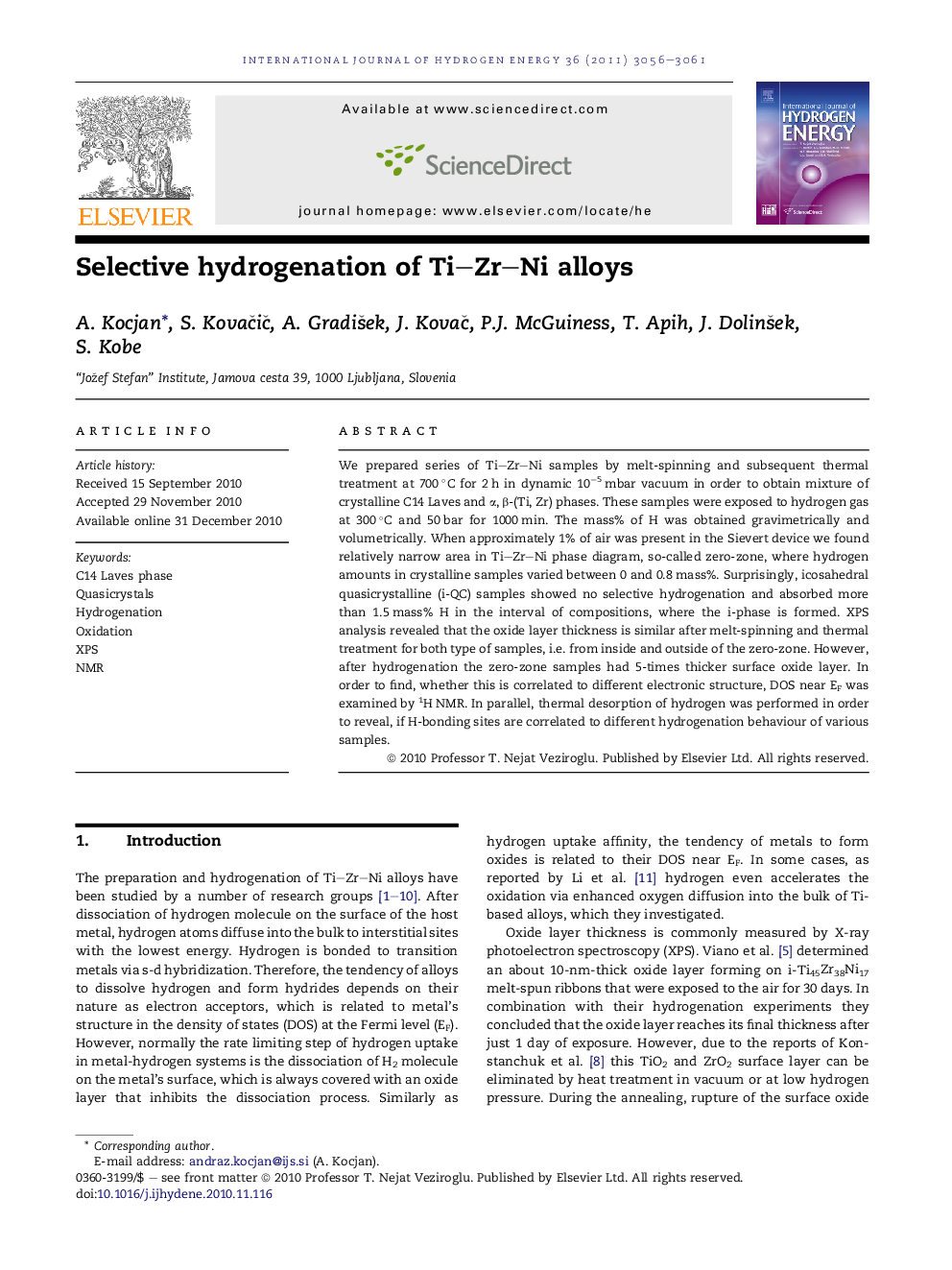| Article ID | Journal | Published Year | Pages | File Type |
|---|---|---|---|---|
| 1276418 | International Journal of Hydrogen Energy | 2011 | 6 Pages |
We prepared series of Ti–Zr–Ni samples by melt-spinning and subsequent thermal treatment at 700 °C for 2 h in dynamic 10−5 mbar vacuum in order to obtain mixture of crystalline C14 Laves and α, β-(Ti, Zr) phases. These samples were exposed to hydrogen gas at 300 °C and 50 bar for 1000 min. The mass% of H was obtained gravimetrically and volumetrically. When approximately 1% of air was present in the Sievert device we found relatively narrow area in Ti–Zr–Ni phase diagram, so-called zero-zone, where hydrogen amounts in crystalline samples varied between 0 and 0.8 mass%. Surprisingly, icosahedral quasicrystalline (i-QC) samples showed no selective hydrogenation and absorbed more than 1.5 mass% H in the interval of compositions, where the i-phase is formed. XPS analysis revealed that the oxide layer thickness is similar after melt-spinning and thermal treatment for both type of samples, i.e. from inside and outside of the zero-zone. However, after hydrogenation the zero-zone samples had 5-times thicker surface oxide layer. In order to find, whether this is correlated to different electronic structure, DOS near EF was examined by 1H NMR. In parallel, thermal desorption of hydrogen was performed in order to reveal, if H-bonding sites are correlated to different hydrogenation behaviour of various samples.
